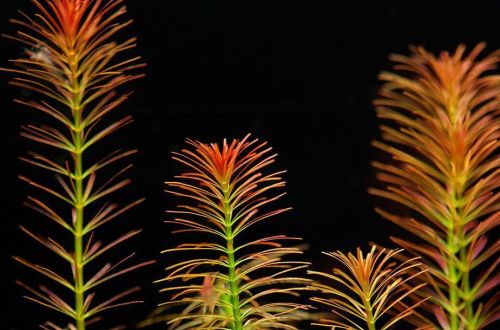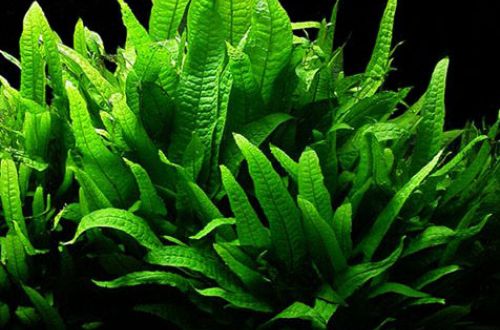
Salvinia klobuchkovaya
Salvinia klobuchkovaya, scientific name Salvinia cucullata. Translated from the Latin “cucullus” means a cone or hood, which indicates the similarly curved shape of the leaves.
The Russian name “klobuchkovaya” comes from the word “klobuk” – a high monastic headdress with a veil, also having a conical shape.
In nature, this plant grows in tropical Asia on the surface of well-lit swampy reservoirs.
The appearance of the plant depends on the growing conditions. If the plant is in warm nutrient-rich water and receives a lot of light, then its leaves acquire a characteristic conical shape and vaguely resemble a boat. The edges of the leaf are raised above the surface, and only the lowest part of the leaf blade, the petiole and the horizontal stem are under water.
The upper side of the leaf is covered with many small hairs, giving a velvety appearance. The hairs reflect light, so the color of the leaf appears pale green with a bluish tinge.
Salvinia klobuchkova develops an underwater stem on each node of which three leaves are formed – two floating and one underwater. At the same time, the underwater leaf noticeably changed, turning into a root bundle.
Each sprout can reach more than 7 cm in length along the stem. Leaves are about 1 cm.
In its appearance, it resembles other related species, such as Salvinia molesta and Salvinia eared.
If the growth conditions are not optimal, for example, lack of light, then the plant loses its characteristic appearance. The leaves straighten and become flat. With flat leaves, Salvinia klobuchkova becomes similar to another related species, Salvinia small.
It grows quickly, so it is recommended to use in spacious aquariums. In small tanks, Salvinia klobuchkova can quickly cover the entire surface of the water and greatly shade the aquarium.
Considered easy to care for. Optimal growth conditions are provided in warm water above 20°C and high light levels. In aquariums with fish, nutrients for the plant will be formed naturally.
The dense root system can serve as a good hiding place for fry and small fish.
Basic information:
- Difficulty of growing – simple
- Growth rates are high
- Temperature — 18-32°С
- Value pH — 4.0–8.0
- Water hardness – 2-21°GH
- Light level – moderate or high
- Aquarium Use – Surface Floating
- Suitability for a small aquarium – yes
- spawning plant – no
- Able to grow on snags, stones – no
- Able to grow among herbivorous fish – no
- Suitable for paludariums – no
Scientific Data Source Catalog of Life





